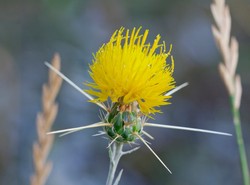Isolation and competition in invasive plants
The EU-funded project REPROWEED (Reproductive isolation and competitive ability between native and non-native ranges of invasive weeds) investigated processes that allow invasive species to be successful in both native and non-native regions. Scientists focused on local adaptation of traits, with particular emphasis on changes in reproductive systems. Researchers successfully identified key traits and found that many of the key trait-shifts between native and non-native ranges (such as increased biomass of invasive C. solstitialis) were also present for other non-invasive species like C. sulphurea and C. calcitrapa. Project partners found that the different local adaptations developed in native and non-native regions were paralleled by an incipient level of reproductive isolation. This suggested that allopatric distribution in invasive species could be subject to the same processes that shape the early stages of allopatric speciation. It occurs when biological populations of the same species become isolated from each other, thereby preventing the exchange of genetic material. Studies conducted revealed the fitness of experimentally produced inter-regional hybrids between Spain and California. Results suggested that potential reintroductions from the native range could reduce the competitive ability of locally adapted individuals by introducing maladapted genomes. Over the last three centuries, human activity has caused many species to be dispersed beyond their natural geographical range. Data revealed that C. solstitialis, for example, first evolved in Turkey and Georgia, before spreading across southern Europe to Spain and then into North and South America. Models were created that allowed scientists to integrate different sources of data to better understand the traits that are most important for invasive success. They showed that C. solstitialis plants from California were the best competitors. However, regardless of origin, significant disturbance is required in the invaded habitat for the species to dominate the ecological community. REPROWEED results will be crucial for developing management plans to combat invasive species and emphasises the prevalence of dynamic environmental conditions over the importance of local adaptation.



